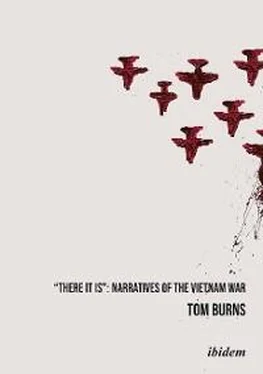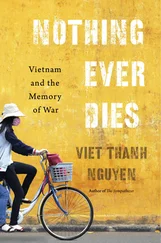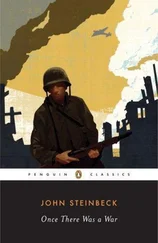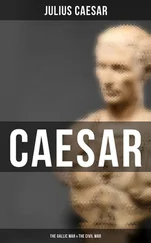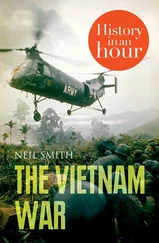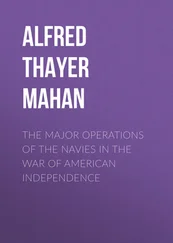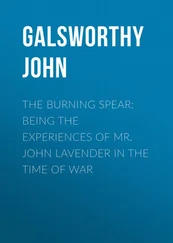Fortuitously, Nam spots Lia, his woman from the road, who has become the mistress of a married Frenchman. She tells him how she escaped and met a man on the ship who promised to take her to a cabaret for a fee, where she could learn to dance and dress in the western fashion and earn a living off foreigners. Lia is a prototype of the ubiquitous Vietnamese bar-girl in later novels. When she offers him money, he refuses, telling her that he will come for her. “Come for me? You do not have enough money for a banana” (257), she replies. He is not so much humiliated by this retort as surprised, for by traditional standards women are supposed to be obedient. “I am ashamed for your father,” he says and walks away. As the weeks go by, he finds that he no longer remembers her as a colonial whore, “her toneless voice, her unfamiliar eyes” but in the images of their nights together on the way to Haiphong. Once again, it does not pay to lament the past.
While begging outside the big casino owned by the Binh Xuyen, the Vietnamese mafia, he sees the owner get out of his big car and his bodyguards beat up a beggar foolish enough to approach him. The beggar turns out to be Hai, who has had many adventures since that day in the fishing-village (he was able to hustle some money on the boat but now has to admit that “Saigon hands are faster than mine”). His plan is to work a religious con-game, doing the work of God for the Cao Dai sect, which, he has discovered “were soldiers more than preachers, and merchants more than soldiers” (269), but he is killed by a stray bullet during a riot. Saigon is currently in the throes of political and social upheaval: Viet Minh agents, Caodaists, Hoa Hao, and Nationalist soldiers “all come together in vicious mêlées that more often than not left someone dead or wounded on the cobblestones” (268). The novel ends when Nam, who has lost his woman and his friend for the second time, decides to go to the labor camp after all, which Hai informed him was not really too bad, just unsuitable for one who is used to living off other people’s money.
The Journey of Tao Kim Nam might be called “Vietnamese picaresque,” with the tragi-comic adventures of a protagonist who, like the classic picaro , is forced to live on his wits and for the present moment alone. Picaresque narratives reflect the every-man-for-himself circumstances of a precarious social environment, where official authority is often the oppressor and survival depends on a combination of lucky breaks and individual cunning. The novel throughout emphasizes the disruption of traditional patriarchal continuity in the Vietnamese family, its close ties, and the relegation of women to subservient roles. Although Nam, at the start of his journey, “had shown little interest in the news of the French and Vietminh War, which has been raging five years” (16), these larger events determine his life in ways that he could not have imagined. Nam is politically naïve but no fool; he successfully overcomes the obstacles of capricious weather, surly officials, greedy soldiers, lack of money, and constant hunger by being “quick” (smart, clever, cunning), by learning from experience, keeping his own counsel and concealing information, and listening carefully.
In this novel about anonymous people, the political background is taken for granted rather than explicitly evoked. President Ngo Dinh Diem, who is never mentioned, has yet to restore order in his confused kingdom and gain the confidence of the Americans who are to maintain him in power. He will continuously neglect reforms that might have given him some legitimacy in the face of Communist successes for a palatial preoccupation with maintaining the power of his family through repression and military force. 70At the same time, the novel’s portrayal of the Viet Minh is hardly sympathetic. The idealism of Ho Chi Minh is nowhere in evidence except in debased form—in the slogans mouthed by the commissars. What is seen at the ground level is the petty cruelties and exploitation of common soldiers and officials, who, at the same time, claim that the refugees fleeing the regime are traitors. Without engaging the political aspects of Vietnamese society in any depth, this well-written novel, which seems to have been totally neglected by commentators, provides a glimpse of the enormous social problems of the entire country, north and south, especially the poverty and ignorance of the peasants who formed 90% of the population during the period.
v. Jean Lartéguy, Yellow Fever (1962; English Translation, 1965)
Lartéguy’s La Mal Jaune is a fictional representation from the French point of view of many of the events summarized in the first section of this chapter. Unlike Bosse’s novel, the focus here is on the movers-and-shakers rather than the peasantry, who remain in the background, with politics playing a central part in the action. Lartéguy’s novel frequently evokes an air of nostalgia for the old French colony, with the author in a number of passages lamenting the passing of an era. Graham Greene, who spent some time in Vietnam during this period, admitted that he shared this nostalgia “with so many retired colons and officers of the French Foreign Legion whose eyes light up at the mention of Saigon and Hanoi.” 71
The historical context of the first part of the novel is Hanoi, late 1955, three weeks before the city is to be handed over to the Communist Viet Minh. The main characters are a group of French journalists who live in a former brothel called the Press Camp, an appropriate setting, since pre-Communist Hanoi is often symbolized in the novel as a dying whore, personified by one of the characters, Ma Lien, who commits ritual suicide on the day before the Viet Minh march into the city. At this point in time, Hanoi is an in-between state, “not yet Vietminh but…no longer French.” 72The bourgeoisie are selling off their non-portable goods, and the foreigners and the prostitutes are heading south in advance of the rigorously nationalistic and puritanical Viet Minh.
The center of the group at the Press Camp is Jerome, the character with whom the author seems most to identify, a highly respected but poorly paid journalist who speaks Vietnamese and knows everybody who is anybody on both sides of the ideological divide. As a journalist, he is always one step ahead of the others because of his inside sources and wide contacts. As he never betrays his sources, everyone is willing to talk to him. Superficially, Jerome resembles Greene’s British correspondent, Thomas Fowler. Both are aging, tolerant, world-weary but worldly wise. Unlike Fowler, however, Jerome is drawn in heroic proportions: an open, honest, and disinterested man who seems to represent what Lartéguy believes is great in French culture, the true inheritance of the French Revolution. Typically, Jerome is critical of his own reputation: “his own past sickened him with its facile generosity of spirit, its false tolerance which merely concealed indifference and superficial humanism” (95).
Another locale frequented by many important local people as well as the journalists is Ma Lien’s brothel and opium-den. The once-beautiful proprietress (called a “procuress” even though her customers procure her), has slept with most of the important men in Hanoi. Ideally situated for occasional work as a police informer, she is now in full decadence, a heavy opium-smoker whose profession is doomed to disappear under Communism. The only other important female character in the novel is Kieu, who sometimes goes by her French name, Claire: a beautiful, desirable, haughty “half-caste,” a Eurasian sexpot with whom all of the men, including Jerome, are in love. Kieu once worked for Ma Lien, who sold her, when she was a thirteen year old virgin, to a French minister and taught her how to extract money and favors from men. Kieu is currently the mistress of General de Langles, the commander of the French forces in Vietnam. She is told by everyone that she has to leave town, since it is obvious that the new regime will not tolerate sexual parasites like her, but she feels a conflict of identity because Hanoi, like herself, is a city “made up of a mixture of blood.”
Читать дальше
